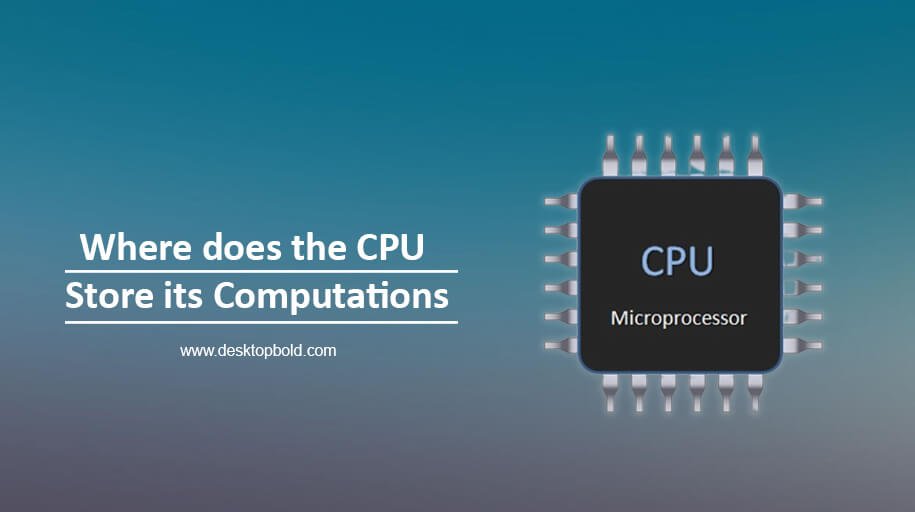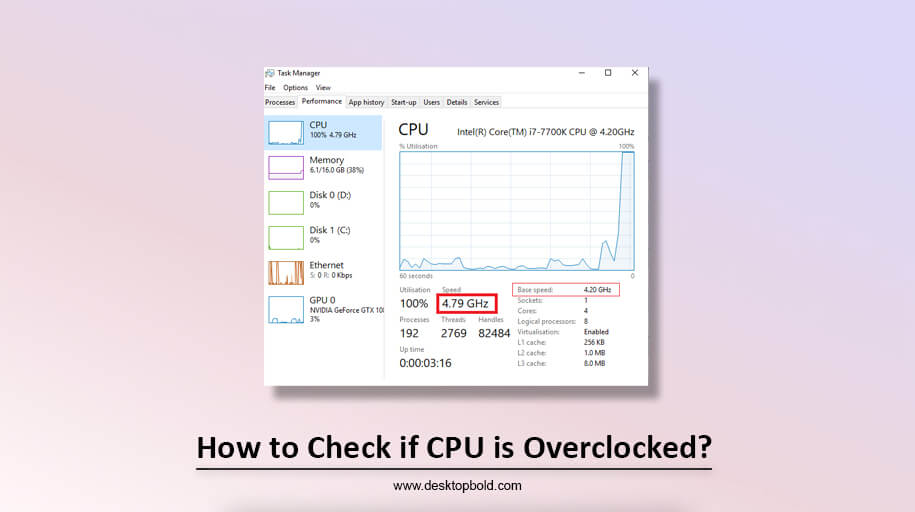Nearly everyone these days has at least one personal computer. With even a cursory familiarity, we can see why the central processing unit (CPU) is so important. The CPU, a computer’s “Brain, “controls the machine’s activities. It performs several calculations during this procedure. If asked, it provides a rough estimate and displays all the prime numbers between 1 and 1000.
Many people have wondered, in this light, where the central processing unit (CPU) keeps its calculations. If you are also wondering this, your search is over. Here, I’ll provide a comprehensive breakdown of that very topic.
Where CPU Stores Computations? – Explained

Registers are the answer to the question, “Where does the CPU store its computations?”. Everything the CPU calculates gets placed in a register, a minor and temporary memory location with multiple uses.
A computer’s temporary storage space is called a register, similar in purpose and construction to random access memory (RAM) and cache. However, the results of calculations performed by the CPU are stored in these. These are the highly rapid memory in computer architecture that carries out the actual work of running programs and activities.
A register is an integral part of the central processing unit. Since it is organized as little storage that can be accessed arbitrarily and added to, removed, or altered, some are read-only, others are written-only, and both types are utilized for special events. Standard register sizes range from 8 bits to 64 bits.
Related Article: How is the Speed of a CPU Measured?
How Does A Register Work?

Registers are fast auxiliary memory locations, although not the same as main memory. These store information, move it around and quickly compare it against other data sets under the supervision of control units.
When instructed to perform computations, a CPU retrieves data from more prominent memories and saves it in registers for quick access. When a new enumeration is started, these become available again. In addition, the registers’ classes can be used to identify their respective purposes. Some are used to record addresses, while others are used to hold data.
Types of Registers

Some registers are better at storing numerical values and other computational data. Based on their processing roles, these are organized into seven distinct categories. Let’s investigate each one individually:
Accumulator
The accumulator is a register that stores information and is used regularly. Various processors have varying quantities of these.
MAR
The information needed to retrieve data from memory is stored in memory address registers (MARs). These registers are usually seen in parallel loaders and store the following memory address to be processed.
MDR
In the Memory Data Register (MDR): Information requiring insertion or removal at the specified address is kept in this Register. Memory buffer registers save the information until the next clock cycle.
GPU
Modern central processing units (CPUs) use general purpose registers (GPRs) to store data while a process runs temporarily. Accessing the data stored in these registers with assembly language is possible.
PC
As its moniker suggests, the Program Counter (PC) is a register that keeps tabs on the next instruction to be executed in a running program. It is used to tally the total number of commands.
IR
Unlike the Program Counter (PC), which stores the address of the next instruction to be executed, the Instruction Register (IR) holds the actual instruction to be completed. While the PC points to the following education, the CPU retrieves the PC’s instruction from memory and stores it in the instruction register (IR).
CCR
It is the job of the Condition Code Register (CCR) to hold the most up-to-date value of the condition codes. The ALU (logical arithmetic unit) uses its five flag bits to record the results of the operation that was just completed. Carry (C), Overflow (V), Zero (Z), Negate (N), and Extend (E) are some examples (X).
How is Cache Different from Register in Storing Computations?
Despite their similarities, many individuals need help to tell the difference between a Register and a Cache. Caches are used to store and retrieve data while reading and writing from secondary memory, whereas operations make use of Registers.
A computer’s registers are far more compact and speedy than a cache. Compared to the 8-byte capacity of the smallest Register, the L1 cache memory is the largest of the cache memories. Registers are commonly referred to as L0 cache, implying that they are the most miniature form of cache since they improve the efficiency of CPU operations.
A cache is used to access memory much faster, and registers are utilized for several operations during a single clock cycle, yet both are included in the CPU. Thus, unlike the cache, the CPU’s registers can sometimes store interim results of calculations.
Summing Up
Your question, “Where does the CPU store its computations?” is hopefully answered. Data is stored in special little memory called registers, accessed during a computation. The importance of random access memory (RAM) and cache in central processing unit (CPU) calculations cannot be understated.
Data from secondary memory is often stored in RAM or cache, while computations are initially stored in Registers. A CPU requires both Register and supply to function optimally.




